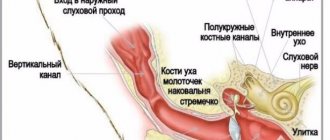Types of tumors and signs of the disease
Malignant tumors of the jaw in cats account for 3–8% of all tumors.
The average age of incidence is 11-12 years, but in practice there are cases of oral cavity tumors in younger individuals (4-5 years). Tumors of the oral cavity include all neoplasms that are localized in the mucous membrane of the gums and oral cavity, tongue, sublingual region and tonsils. Tumors of the mucous membranes tend to invade the underlying bone, so the diagnosis is often made of a tumor of the upper/lower jaw.
Symptoms of a mouth tumor in a cat
- drooling (sometimes with blood);
- refusal of food;
- difficulty eating food;
- weight loss;
- unpleasant odor from the mouth;
- an increase in the volume of tissues of the upper or lower jaw;
- nose bleed;
- loss of teeth;
- bloody discharge from the eye;
- blocking of the temporomandibular joint.
Among all malignant tumors of the oral cavity in cats, squamous cell carcinoma occurs with a frequency of 74%, fibrosarcoma - 20%, others - 6%.
Tumors of the oral cavity in cats rarely metastasize to the lungs and are more local invasive (destruction of the bones of the upper or lower jaw, orbit of the eye, increased volume of soft tissue, impaired tongue function), as a result of which the animal refuses to eat food.
Malignant neoplasms in the oral cavity in dogs and cats
Oral cavity tumors are the most common malignant neoplasms in veterinary practice. In cats they account for 3-10% of all cancers; in dogs, in terms of frequency of detection, they are in 4th place among all tumors. The most common cancers in dogs are malignant melanoma (MM), squamous cell carcinoma (SCC) and fibrosarcoma (FSA). In cats, PCK predominates, FSA is less common. The prognosis for the outcome of the disease depends on the type and size of the tumor, as well as its location. For benign tumors or inflammatory processes in the cavity or mouth (viral papillomas, epulid tumors, eosinophilic granulomatosis), the prognosis for the outcome of the disease is favorable. These neoplasms must be differentiated from malignancies when evaluating patients with oral neoplasia.
This publication describes the most common types of oral malignancies in cats and dogs, as well as the latest treatments and clinical trial results.
Clinical symptoms Clinical signs of neoplasms in the oral cavity are nonspecific and depend little on the specific type of tumor. Tumors located rostrally in the animal's oral cavity are easy to detect, and pet owners who discover foreign tissue mass in their pet contact their veterinarians (Figure 1). Neoplasms of such localization are easier to diagnose in the early stages of development and promptly and completely remove. Accordingly, the prognosis for the outcome of the disease in such cases is more favorable, especially for some types of tumors, for example, PCI in dogs. Neoplasms located deep in the oral cavity are not always recognized in time. They can be difficult to detect visually, and pet owners often mistake them for benign tumors. Meanwhile, a suspicion of the presence of a cancerous tumor in the oral cavity can be noticed during routine procedures, for example, brushing the animal’s teeth. Such a sign in a dog or cat is the presence of loose teeth in the general good condition of the dental system. When extracting similar teeth from a cat or dog, it is necessary to urgently conduct a biopsy and histological examination of gum tissue samples. This is of great importance for the early detection of PCI in cats.
Figure 1. Oral squamous cell carcinoma in a dog, located rostrally.
The presence of a tumor in the animal's oral cavity is indicated by ptyalism (increased salivation, Figure 2), halitosis, difficulty swallowing, weight loss or loss of appetite, as well as enlargement and hardening of the mandibular and peripharyngeal lymph nodes, revealed by palpation, loss of interest in chewing toys, the appearance of blood stains on pieces of food, in drinking water and on bedding. Other signs are exophthalmos, asymmetry of the muzzle, sneezing, nasal discharge, scratching the mouth with the paws. The veterinarian should always examine the animal’s oral cavity during any general clinical examination, but it is especially important to carefully examine it if the animals have the above signs
Figure 2. Excessive salivation is one of the symptoms of neoplasms in the oral cavity in animals
Diagnostic examination
Diagnostic methods and techniques for tumors in the oral cavity are determined by the location of the tumor. Tumors located rostrally in the oral cavity are easily accessible, and tissue samples can be obtained after sedating the animal. However, tumors located deep are difficult to access and often bleed after biopsy. To perform a biopsy in such cases, general anesthesia is indicated. Before anesthesia, you need to carefully examine the patient and do general clinical and biochemical blood and urine tests. If a malignant tumor is suspected, a three-plane chest x-ray is recommended, which helps identify metastases. Although it has been shown that metastases are rarely detected in dogs at the time of initial detection of a tumor in the oral cavity (approximately 13.6% of cases), their presence is a contraindication to surgical intervention. X-rays (Figure 3) or computed tomography of the affected areas help to assess the size of the tumor and, depending on this, determine how to treat it. Approximately 60-80% of neoplasms in the oral cavity are localized on or near the gums and penetrate into the bone tissue of the jaws, destroying it, which is clearly visible on x-rays. If an oral malignancy is suspected, it is recommended that the animal undergo oral radiographs and a biopsy under general anesthesia to avoid overexposing the animal to anesthetic agents. Visual examination does not always accurately assess the extent of tumor spread, especially in cases of PCI in cats.
Figure 3. To assess the extent of the tumor and plan its treatment, it is recommended to conduct radiography or computed tomography of the tumor area (for example, a tumor of the lower jaw)
To differentiate malignant neoplasms in the oral cavity from benign tumors and inflammatory processes that are similar in appearance, a biopsy is necessary. The study looked at cats with tumors on the lower jaw, and in 50% of the animals the tumors were benign or the result of inflammatory processes. If the tumor is small and located superficially, the biopsy can be carried out in a gentle manner and be of a therapeutic nature (Figure 4). However, with a large, deeply penetrating tumor, the biopsy must capture the tumor tissue to its entire depth - only this approach will allow a correct assessment of the scope of the upcoming surgical intervention and ensure complete removal of the tumor, since the type of tumor and the stage of its development largely determine the tactics of the operation and the course of subsequent treatment. Such a biopsy should be extensive in order to best reflect the histological structure of the tumor. When performing a biopsy, necrotic areas adjacent to the tumor should be avoided. You should also not limit yourself to a superficial biopsy. When performing a surgical biopsy, the sampling site must be chosen so that it is clearly visible during subsequent surgery. If the tumor is located in the oral cavity, tissue samples are best obtained through the oral cavity - there is no risk of “contamination” of tumor cells in surrounding tissues (which may require histological examination later). Electrocoagulation to stop bleeding should be used after a biopsy, as it can disrupt the original histological structure of the tissue.
Figure 4. For small tumors, it is convenient to perform an excisional biopsy while simultaneously removing the accessible part of the tumor
Figure 5. Malignant oral melanoma in dogs metastasizes rapidly. In this dog, 2 months after the initial detection of MM, numerous metastases are visible in the abdominal area
Figure 6. Squamous cell carcinoma is the most common oral malignancy in cats. The tumor is usually located on the gums or under the tongue.
Biopsy samples must be examined by a qualified veterinarian in a laboratory equipped with a set of methods for immunohistochemical analysis. The cells of some types of oral tumors are poorly differentiated and may require special tissue staining techniques to identify them. For example, to detect carcinoma cells, staining for the presence of cytokeratin is required, to detect sarcomas - for the presence of vimentin, and to diagnose melanomas - staining for the presence of protein S-100, melanin A and neuron-specific enolase. Melanomas are especially difficult to differentiate - their cells are diverse in shape and can be round (like lymphoma and plasmacytoma cells), oval (like carcinoma cells) or elongated, spindle-like (like sarcoma cells). In addition, sometimes melanoma cells do not contain melanin granules, which are usually their characteristic feature detected during pathological examination. The most informative is not only histological, but also cytological examination of tumor tissue with subsequent comparison of the results obtained. When conducting such a comparative analysis, before fixing the biopsy samples with formaldehyde, smears of these samples should be made on glass slides for cytological examination.
It is very important to conduct a histological analysis of the lymph nodes adjacent to the tumor (especially those located on the same side). Samples of their tissue should definitely be obtained by biopsy, even in cases where they are not enlarged or compacted. It is difficult to assess the presence of metastases of regional lymph nodes only with the help of palpation and examination. In one clinical study, 44 dogs and cats with cancer were examined (in 9 animals the tumors were localized in the oral cavity). It was found that upon palpation of regional lymph nodes, metastases were detected only in 60% of cases, and the specificity of diagnosis was 72%. At the same time, when studying the condition of the lymph nodes using aspiration biopsy, metastases were detected in 100% of cases, and the specificity of diagnosis was 96%. If, upon palpation of regional lymph nodes or as a result of cytological examination, there is a suspicion of the presence of metastases in them, it would be reasonable to remove these lymph nodes.
Currently, there is no data that would indicate an acceleration of tumor metastasis after removal of regional lymph nodes. There is also no data indicating the possibility of metastasis to lymph nodes that were not detected histologically. It should also be remembered that the outflow of lymph from the tissues of the oral cavity also partially occurs through the parotid and medial retropharyngeal lymph nodes. Since they cannot be palpated, when examining an animal, in addition to radiographs of the tumor itself, it is necessary to obtain a radiographic image of them. If there are metastases in the lymph nodes, treatment aimed at removing only the primary tumor will not be effective.
Biological features of oral tumors
Malignant melanoma
Malignant melanoma (MM) is the most common type of oral tumor in dogs and is less common in cats. The incidence of melanoma in males and females is approximately the same. The average age of animals in which melanoma was first diagnosed is 11 years. Melanoma is a malignant tumor and in 80% of cases gives local and distant metastases (Figure 5). In the presence of small tumors (up to 2 cm) that have not given metastases (stage I of development), the prognosis for the outcome of the disease is more favorable than in the presence of large tumors (over 4 cm) or tumors that actively metastasize to regional lymph nodes (stage III of development) According to one research, the average lifespan of dogs with stage I CM was 511 days, and stage III CM was only 164 days. Some studies have noted that melanomas located in the posterior parts of the upper jaw or anterior parts of the lower jaw have a less malignant development than MM localized in other parts of the oral cavity, and therefore the prognosis for the outcome of the disease is more favorable. Other studies, however, do not confirm the relationship between the location of the tumor and the prognosis of disease outcome. Squamous cell carcinoma (SCC)
This tumor ranks first in frequency of detection in the oral cavity in cats and second in dogs. CC is a local but deeply penetrating cancerous tumor. Very often it grows into the bone tissue and causes its lysis, therefore, when diagnosing, you should pay special attention to the degree of destruction of bone tissue and the depth of tumor penetration. CC most often occurs in dogs and cats of the older age group (the average age of initial diagnosis is 8.8 years in dogs and 10.5 years in cats). It is believed that possible causes of FCC in cats are the presence of animals in smoky rooms and the use of anti-flea drugs containing substances with carcinogenic properties. Due to the habit of cats to lick and clean their fur, carcinogenic compounds enter the animal's oral cavity and initiate the development of CC. The most common site for CC in cats is under the tongue and in the gum area (Figure 6).
Squamous cell carcinoma on the tongue of a dog
Unlike LM, PCK rarely metastasizes to regional lymph nodes. The exception is tumors located on the tonsils and tongue. With such a localization of the tumor in dogs (Figure 7 and the prognosis for the outcome of the disease is unfavorable. Sometimes an increase in regional lymph nodes with PCK localized on the tonsils is a reason for the animal owner to contact a veterinarian. Often in such cases the tumor itself appears later.
The exception is tumors located on the tonsils and tongue. With such a localization of the tumor in dogs (Figure 7 and the prognosis for the outcome of the disease is unfavorable. Sometimes an increase in regional lymph nodes with PCK localized on the tonsils is a reason for the animal owner to contact a veterinarian. Often in such cases the tumor itself appears later.
The prognosis for the outcome of PCI in dogs largely depends on the location of the tumor. At the same time, in places of usual localization, PCI can be successfully treated with surgery or radiation therapy. However, tumors localized on the tonsils or at the root of the tongue are difficult to treat, recur and quickly metastasize. Often in dogs, CC develops on both tonsils at once. In such cases, the animal usually does not survive more than a year. The prognosis for the outcome of the disease is also unfavorable for cats - only 10% of animals with PCI live more than a year even after treatment.
Fibrosarcoma
Fibrosarcomas (FSAs) are malignant tumors that develop from connective tissue. In the oral cavity of cats and dogs, they most often occur on the gums. In dogs, FSAs are usually located at the base of the maxillary carnassial teeth. Sometimes fast-acting forms of FSA in dogs develop from the tissues of the hard and soft palate on the upper jaw. FSA, compared with CC and melanomas, affects dogs at any age (the average age of affected animals is 7.6 years). The age range for the initial detection of this tumor is quite long - 0.5-15 years. FSA quickly grows into the underlying bone and surrounding tissue, which makes it difficult to determine the boundaries of its spread. In some cases, based on the results of histological analysis, the tumor is determined to be benign or slightly malignant, but it grows extremely quickly. Most often, the disease occurs in this way in dogs of the Golden Retriever breed, if the FSA is localized on the upper or lower jaw (Figure 9). The overall rate of metastasis of the FSA is less than 25%. In this case, metastases usually develop in regional lymph nodes or in the lungs.
Figure 8. Squamous cell carcinoma on the tonsils of a dog.
Figure 9. Fibrosarcomas of the lower jaw in dogs of the Golden Retriever breed can be determined as benign according to histological examination, but they grow very quickly
Figure 10. Because squamous cell carcinomas rarely metastasize, local surgery (eg, rostral mandibulectomy) is effective.
Figure 11. Large inoperable tumors (eg, melanoma) involving the middle part of the hard palate can be palliated with intermittent high-dose x-rays.
Osteosarcoma
In dogs, approximately half of axial osteosarcomas (OS) are located in the maxilla or mandible. The prognosis of the outcome of the disease depends on the location of the tumor. OS located in the lower jaw has a more favorable prognosis for the outcome of the disease compared to OS localized in the upper jaw. According to research results, the average life expectancy of dogs after surgical removal of OS of the upper jaw did not exceed 5 months, while in the case of OS of the lower jaw, approximately 70% of animals lived for at least a year. When the tumor is localized in the lower jaw, surgical intervention is sufficient to achieve a positive effect; for other localizations of the tumor, in addition to surgical removal, chemotherapy is also necessary.
Treatment of malignant tumors of the oral cavity
The main methods of treating malignant neoplasms in the oral cavity in dogs and cats are surgical removal of the tumor, radiation therapy and chemotherapy with antitumor drugs. Less commonly used are immunotherapy, photodynamic therapy, and hyperthermia treatment.
Surgical removal of the tumor
Complete surgical removal of the tumor is the most radical and effective method of treating malignant neoplasms of the oral cavity. Rostral tumors, including tongue tumors, should be removed during surgery depending on the extent of the tumor tissue (Figure 10). One review analyzed 81 cases of malignant tumors of the mandible in dogs that were removed surgically by mandibulectomy. The lifespan of animals after surgery largely depended on the location of the tumor. With neoplasia localized in the anterior, middle and posterior parts of the lower jaw, the average survival time of dogs was 64, 9 and 20 months, respectively.
Dogs retain the ability to eat and drink even after half of the mobile part of the tongue is removed. Cats do not tolerate such surgical intervention well, due to the suppression of the ability to groom, their coat condition significantly deteriorates. The average lifespan of 80% of dogs undergoing mandibulectomy for a mandibular cervical ligament is more than 1 year. After surgical removal of the same tumor located on the tongue, only 25% of animals survive to a year. The prognosis for the outcome of the disease is even more unfavorable for cats suffering from PCI; animals who have undergone mandibulectomy live 2.5 to 6 months after surgery. In both cats and dogs with oral cancer, insertion of a gastrostomy tube for nutritional support may be a palliative treatment option. Seven cats following mandibulectomy and regional lymph node resection were given nutritional support through a feeding tube while receiving postoperative radiotherapy. At the same time, the average life expectancy of animals after surgery was 14 months.
The boundaries of the tissue to be removed when performing surgical excision of tumors on the lower or upper jaw should be at least 2 cm from the visible boundaries of the tumor. Despite this, sometimes a complete maxillectomy or mandibulectomy is not necessary. One study found that the effectiveness of surgical removal of oral ulcers in dogs depends little on the radicality of the operation. With partial mandibulectomy, 91% of dogs with PCK, 50% of animals with FSA, and 21% of animals with ZM lived for 1 year. 85% of pet owners were satisfied with the outcome of partial mandibulectomy performed on 27 dogs with oral tumors. Pet owners noted that after surgery their dogs had no pain.
For small tumors (less than 2 cm) that do not penetrate deep into the bone tissue, cryosurgery gives good results. However, when larger tumors are removed by cryosurgery, severe complications often develop in the form of oronasal fistulas, as well as necrosis and fractures of the jaw bones.
Radiation therapy Radiation therapy is used to treat small CCs or tumors in which even microscopically it is not possible to determine the boundaries of spread. Radiation therapy, which is quite effective in PCI, does not give very good results in the treatment of FSA and ZM. One prospective study of 105 dogs with PCI, FSA, and LM examined the effectiveness of treatment with X-ray irradiation at a total dose of 48 Gy in 4 Gy increments every other day for 4 weeks. It has been shown that the lifespan of animals is determined mainly by the size of the tumor at the beginning of therapy. This is why it is important to start using radiation therapy in the early stages of the disease. Since the effect of radiation is short-lived, re-irradiation is recommended for those tumors that did not respond well to the initial treatment. In such cases, one can hope for an active secondary response.
It should be noted that radiation therapy alleviates the course of the disease, improves the patient’s quality of life and allows delaying the euthanasia of the sick animal. In most veterinary clinics, the commonly used radiation regimen is 15-21 doses, but a more aggressive regimen (fewer exposures, but with a larger single dose) can be used. In case of MM, an aggressive irradiation regimen (once a week) gives an effect that is practically no different from the effect of the usual regimen, but allows reducing the patient’s time in the clinic.
carcinoma
carcinoma
Figure 12. Large diffuse squamous cell carcinoma located near the frenulum and extending to the base of the tongue (Figure 12 a). Since such a tumor cannot be completely removed, and the likelihood of metastases is high, the prognosis for the outcome of the disease is unfavorable. The dog, however, managed to achieve remission with the help of palliative radiation therapy, the results of which 6 months after the course are presented in Figure 12 b. Although the animal's tongue increased in size and became fibrous, histological analysis of the biopsies did not reveal the presence of tumor cells at the site of the tumor 6 months after the course of radiation therapy. Radiation therapy is an effective palliative treatment option when the tumor is not resectable, such as large tumors in the midline of the hard palate (Figures 11 and 12). However, there is other information in the literature - 7 cats with PCI received radiation therapy with doses of 8 Gy on days 0, 7 and 21 from the moment the disease was diagnosed; in 6 animals (85.7%) activation of tumor growth was observed. Thus, it is better not to use high-dose radiation to treat cats with PCI. It has been established that artificial hyperthermia improves the effectiveness of radiation therapy for tumors, but this method is not yet available for use in veterinary practice.
Drug therapy
The death of patients from oral cancer (for example, CC or FSA) is most often a consequence of the development of the main tumor, rather than its metastases. Therefore, it is believed that chemotherapy is less effective compared to local treatment of the underlying tumor. People with tumors in the head and neck area are given additional chemotherapy with drugs such as mitoxantrone (mitosantrone), 5-fluorouracil (5-FU), and cisplatin to increase the effectiveness of radiation therapy. These anticancer drugs may also be useful for veterinary patients. However, there are few reports on the effective use of antitumor drugs in veterinary practice. It has been established that systemic use of 5-FU is contraindicated in cats, as it causes side neurotoxic effects in these animals.
In cats with unresectable PCI, the effectiveness of radiation therapy can be increased by combining radiation and chemotherapy with mitoxantrone. The average survival time of animals treated with this combination treatment was shown to be 6 months, with 30% of cats surviving for 1 year. However, for malignant neoplasms in the oral cavity in cats and dogs, the use of chemotherapy alone is ineffective.
The use of piroxicam (a drug from the group of non-steroidal anti-inflammatory drugs, NSAIDs) had a beneficial effect in palliative therapy for PCI. The study involved 17 dogs with oral CC. With the help of piroxicam, it was possible to achieve complete resorption of the tumor in one animal and partial resorption in two (in one dog the PCI was localized on the tongue, in the other on the tonsils). The median and mean duration of therapy until the therapeutic effect disappeared was 180 days and 223 days for dogs. In addition to the animals mentioned, in another 5 dogs the disease stopped progressing after a course of piroxicam therapy. In this case, the optimal dosage of piroxicam with preserved kidney function is 0.3 mg/kg body weight per day per os, for cats - the same amount, but 1 time per 48 hours. Since complications such as ulcers of the gastric mucosa may occur during the treatment of NSAIDs, some researchers recommend the additional use of prostaglandin analogues (for example, misoprotil) during piroxicam therapy. In general, drug treatment for oral FSA or LM is ineffective.
The most encouraging results for the use of chemotherapy for the treatment of MG in dogs were recently obtained by Rassnick et al. The study involved 27 dogs with LM, and in 25 animals malignant neoplasms were localized in the oral cavity. Animals were treated with carboplatin between 1989 and 2000. (300-350 mg/m2 body surface, IV doses, every 21 days). In 28% of cases, significant remission of the disease was achieved. Thirteen dogs with oral ulcers were treated with carboplatin after surgical removal of the primary tumor. In this group of animals, the median and mean survival time after surgery were 57 and 299 days, respectively. Based on these data, the authors concluded that carboplatin is very effective in the treatment of large melanomas and can be used as an additional therapy, especially in cases where the tumor cannot be completely removed or is actively metastasizing.
Another study showed the effectiveness of intravenous melphalan in the treatment of MG in a group of 11 dogs. In 3 animals, the use of this antitumor drug caused remission, which lasted an average of 4 months (22). Other antitumor drugs (doxorubicin, mitoxantrone, cisplatin) are ineffective in chemotherapy for cancer in dogs. As for cats, the use of a combination of doxorubicin and cyclophosphamide gave complete remission in 1 case and partial remission in 3 cases (9 cats with oral ulcers took part in the study). At the same time, the toxic side effects of the drugs were within acceptable limits.
The effectiveness of local antitumor chemotherapy in the treatment of neoplasms in the oral cavity in dogs and cats was studied. Dogs with CM were injected directly into the tumor with a collagen-based gel containing cisplatin in combination with adrenaline (which has a vasoactive effect). Injections were given to 20 animals at 1-2 week intervals. In 70% of dogs there was a significant improvement in condition, and in 50% of animals the tumor completely disappeared. Compared to control dogs (who had similar tumors treated with traditional methods), animals treated with local chemotherapy experienced an increase in average life expectancy. When the tumor completely disappeared, dogs lived an average of 51 weeks after treatment, while animals in the control group lived only 10.5 weeks (23). The effectiveness of collagen gel with cisplatin brand “IntraDose” (from Matrix Pharmaceutical Inc., USA) for the treatment of FSA is currently being studied. This drug will soon be available for sale. Photodynamic therapy
Photodynamic tumor therapy (PDT) involves infusion, systemic administration, or application of a photosensitizing substance. 24-48 hours after administration of the photosensitizer, the patient is irradiated with light with a specially selected spectral composition (to activate the agent). Unfortunately, the use of PDT in veterinary practice is limited. The method is used only in some cancer centers and university veterinary clinics in the United States. The first published results on the use of PDT for the treatment of oral PCI in dogs are encouraging. Thus, PDT in 12 dogs with PCI caused remission with an average duration of more than 17 months in 8 cases. In addition, compared to radiation therapy, PDT requires significantly shorter patient hospitalization and provides excellent cosmetic results (Figure 13). However, the experience of using PDT for the treatment of PCI in the oral cavity in cats, accumulated in the author’s clinic, indicates that this method is not very effective.
Immunotherapy/gene therapy
Methods for stimulating the immune system during tumor therapy are one of the main areas of research in the field of medical and veterinary oncology. In a veterinary clinic, oral cavity tumors are most effectively treated with immunological methods. It has been shown that dogs with such neoplasms experience remissions after stimulation of the immune system with preparations of corynobacteria or liposome-encapsulated muramyl tripeptides (L - MTP - PE). The use of antitumor vaccines and cytokine therapy (interleukin-2 or GM - CSF) has yielded encouraging results. It is possible that further clinical trials will lead to the emergence of affordable methods for treating tumors, applicable in cases where traditional methods are ineffective or are not available for financial reasons.
Diagnostics
An initial examination of a pet by a specialist will not provide the necessary data even for making a diagnosis. It is necessary to conduct a histological examination of scrapings, biopsy specimens, and an impression of the ulcer. After this, the presence or absence of metastases should be determined. To do this, a biochemical and general blood test is performed.
Lymph nodes and lungs need to be carefully examined using X-rays, and 3 projections of the chest should be made to determine the presence or absence of metastases. If possible, CT or MRI should be used as they provide more information. It is also necessary to perform cytology or histology of the lymph node biopsy.
How is the treatment carried out?
Depending on what caused the lump, the veterinarian will prescribe the necessary treatment. It is carried out in a veterinary clinic.
Treatment of formation on the cheek:
- drug therapy. Antibiotics, antiseptic drugs, antiallergic and anti-inflammatory drugs are prescribed;
- applying a cold compress;
- chemotherapy and radiation therapy;
- pus is removed. A drainage tube is installed to drain it.
If the owner did not immediately pay attention to the lump and the tumor on the face bursts, you need to contact a veterinarian as soon as possible. Painful sensations will prevent the cat from eating and drinking. An open wound can become infected and become infected.
Lung cancer in cats: symptoms, diagnosis, treatment
Primary lung cancer is a fairly rare disease, accounting for only 0.5% of all diagnosed neoplasms. So far, no etiological factors have been found for the appearance of this type of tumor. Lung cancer in cats is treated with surgery, radiation and chemotherapy. The prognosis is often unfavorable or guarded.
Etiology and symptoms of the disease
No gender or breed predisposition was found in cats. Typically, the tumor is found in the right posterior lobe of the lung. Despite the fact that it has long been established that lung cancer is caused by tobacco smoke in humans, no such dependence has been found in cats.
Most cancers become malignant, usually originating from epithelial cells. Adenocarcinomas, as a rule, are localized in the bronchi, alveoli, bronchial glands; carcinomas can be localized in the trachea and large bronchi. Overall, the causes of lung cancer remain unknown.
There are no clinical manifestations at an early stage, which is why the cat is taken to the veterinarian quite late. The first signs are coughing and difficulty breathing. Then dyspnea is added, the animal loses weight and quickly weakens, body temperature increases, and hemoptysis develops.
Often, with lung cancer, symptoms of pneumonia appear as a complication, the amount of calcium in the blood increases, and hypertrophic osteopathy appears due to the leaching of calcium from the bones.
Disease prognosis
It depends on the size of the tumor, the presence of metastases and damage to regional lymph nodes:
- When the tumor is single, located among healthy tissues, and does not have metastases, the prognosis is cautious. This is due to the fact that adenocarcinoma and carcinoma often recur. The average life expectancy is about a year.
- With multiple tumors, as well as damage to regional lymph nodes, the prognosis is unfavorable. If the neoplasm has penetrated into neighboring structures and given distant metastases, then the prognosis is also unfavorable. The average life expectancy in these cases does not exceed 4 months.
- The prognosis worsens when the tumor is located on the periphery of the lung, since in this position it is difficult to determine the boundaries of the tumor, moreover, it easily metastasizes here.
- With single solitary, discrete tumors that do not have metastases, after successful surgery, life expectancy increases greatly, can be several years or more.
Surgery
There are several types of operations:
- Resection or excision of a lung fragment. During this operation, one small section of the lung is removed; the operation is recommended for benign lung tumors (which is very rare).
- Segmentectomy – removal of a segment of the lung.
- Lobectomy – removal of a lobe of the lung.
- A pneumonectomy is the removal of one half of the lung, while surrounding fatty tissue and lymph nodes are removed.
During the operation, an incision is made between the ribs, after which the latter are moved apart. Before removing a lobe of the lung, the pulmonary artery and vein are ligated (to avoid blood loss).
After the operation, the bronchi are sutured and the tightness of the bronchial stump is ensured. Then the chest is sutured and air is drained from the chest cavity at the same time.
After surgery, active aspiration of the lung is recommended for 24 hours.
Before surgery, lymph nodes and other organs are examined for the presence of metastases. Removing lymph nodes is not advisable (with the exception of pneumonectomy), as they contain the spread of cancer. The presence of a tumor only in regional lymph nodes is not a reason to cancel surgery, but the presence of metastases in other organs casts doubt on the feasibility of surgical treatment.
Prevention
There are several simple rules that can prevent squamous cell carcinoma on the skin and its serious consequences:
- You should not let the animal out for a long time in bright sunshine, especially from 11 a.m. to 4 p.m.
- If the animal is outside on a hot day, it is better to place it in the shade from the sun.
- If you notice the first symptoms of solar dermatitis, you should immediately contact your nearest veterinarian.
- The best prevention of this disease is its early diagnosis and subsequent treatment, so you need to be attentive to your pets.
General description and mechanism of the disease
Squamous cell carcinoma in cats is a commonly diagnosed disease. As a rule, the localization of a malignant neoplasm is located in open areas of the skin, where ultraviolet rays penetrate without problems.
Cancer in an animal can occur against the background of chronic inflammatory processes, long-term non-healing wound surfaces and ulcerations.
In most cases, veterinary medicine specialists diagnose tumors that arise in epithelial cells. These are single neoplasms in the form of erythematous papules, nodes or plaques. Malignant tissue proliferation is accompanied by increased peeling of the skin and bloody ulcerations. The skin around the cancer tumor will not change.
Scientists have identified a number of factors that can provoke mutation of healthy cells in the body. The main ones are:
- prolonged exposure to ultraviolet rays (an animal exposed to the sun for a long time, as well as frequently getting burns, can develop skin cancer);
- radiation of an ionizing nature – when a cat is irradiated during the treatment of other pathologies;
- chronic skin diseases (trophic ulcers, dermatitis, pyoderma);
- viral or fungal infections;
- exposure to aggressive chemicals on the skin;
- genetic disorders;
- long-term use of medications.
There are two types of squamous cell skin cancer – endophytic and exophytic. The ulcerative-infiltrative or endophytic form of a malignant neoplasm is characterized by the appearance of a small spot on the skin, which quickly develops over 2-3 months into a dense, nodular, sedentary formation.
After a couple of months, an ulcerative lesion appears on the surface of the formed node, emitting a repulsive odor. This type of squamous cell skin cancer affects nearby tissue structures, regional lymph nodes and is capable of metastasizing to bone and lung tissue.
The form of squamous cell carcinoma is papillary or exophytic, growing rapidly immediately from the onset of tumor formation. It is a dark brown bulge that rises above the skin. The tumor itself is not mobile and can grow into the deepest parts of the epidermis and surrounding structures.
There are also such types of squamous cell cancer as keratoacanthoma, lesions of the animal’s oral cavity against the background of leukoplakia, verrucous form of the tumor and cancer of the skin of the lips.
Symptoms of the disease
They differ somewhat depending on where the tumor is located.
Skin cancer
Unfortunately, the tumor does not have specific signs; in the early stages the following symptoms may be observed:
- Slowly healing wounds on the skin.
- Ulcers, abrasions that do not disappear for a long time.
- Non-healing purple spots of unknown etiology, similar to red cauliflower.
- Hair loss is often noticeable on the damaged area of skin.
- Cancerous ulcers are small, crusty, bleeding erosions with convex edges.
- When infected, they may have an abnormal color coating and an unpleasant smell.
- Typically, all these pathologies are observed at the tips of the ears, nose, and corners of the mouth.
As you can see, these signs can easily be mistaken for an infectious or invasive lesion, which often happens. In addition, wounds often become infected, increasing the similarity with a bacterial disease. Cancer is suspected when they see a lack of response to treatment and when ulcers continue to grow despite antibiotics and antiviral drugs.
Oral cancer
In the mouth, at the first stage, squamous cell carcinoma looks like ulcers and erosions that periodically fester, which is why the animal has a strong unpleasant odor from the mouth. Owners discover pathology when cancer prevents the cat from eating normally, which is why the pet loses weight.
Mobility of teeth, bleeding from the gums, profuse salivation gradually develops, and pathological discharge from the nose is sometimes observed (if localized in the upper jaw). Later, the tumor becomes so large that the curvature of the jaws is visible even from the outside. In this case, pathological fractures may occur.
How to treat mouth ulcers in cats?
The treatment method depends on the cause of the erosive lesions.
For diseases of bacterial etiology, ulcers are smeared with antibiotic drugs:
- Levomekol;
- Metrogil;
- Oxytetracycline;
- Levorin.
Ointments are used to treat fungal infections:
- Nystatin;
- Clotrimazole;
- Clomegel.
For a viral infection:
- Zovirax;
- Oxolinic ointment.
To relieve inflammation, rapid healing and increase local immunity, the following drugs are used:
- Gamavit;
- Hemobalance;
- Actovegin-gel;
- Kamistad;
- Bepanten;
- Depanthenol.
Purulent erosions are washed with a solution of Chlorhexidine, Furacilin, Hydrogen Peroxide 3% or a weak solution of potassium permanganate. Infusions of oak bark, chamomile, and calendula are natural antibiotics and heal tissue well. They can also be used to rinse the cat’s mouth.
In case of infectious or helminthiasis diseases, it is not enough to treat only wounds. When a cat's mouth ulcers are caused by herpes, calcivirus, or an acute bacterial infection, oral medications are necessary.
Mandatory medication is also necessary for parasitic infestations. In severe cases, droppers and injections are given. To find out the exact cause of erosion, you need to consult a specialist. Self-treatment is permissible only if it is not possible to urgently show the animal to a veterinarian.
Surgical treatment of oncology
Surgery for oncology in animals is the most common and logical treatment method. Unfortunately, it often turns out to be ineffective. This is due to the characteristics of malignant tumors. With rare exceptions, they all have a tendency to form metastases. And if metastases have appeared, simply cutting out the tumor will not do anything. A couple of weeks, a month or a year will pass, and a dozen more new tumors will be detected in your pet. Therefore, surgery in the treatment of cancer is used if at least several of the following conditions are met:
- Oncology in cats must be operable. Simply put, if the tumor is located somewhere in the medulla oblongata, the chances of surgery being successful are close to zero. “Human” surgeons rarely take on such cases!
- The animal's condition should be normal. If a cat can no longer walk due to pain and exhaustion, there is no talk of any surgery (or for now). It must first be brought into adequate shape, tumor growth must be suppressed with the help of chemotherapy or radiotherapy, and only then the issue of surgical elimination of the problem must be resolved.
- Finally, a trivial problem - not all veterinary clinics have equipment and qualified specialists capable of performing a truly complex operation. Therefore, it may turn out that you will have to take your pet to another city.
It is immediately necessary to emphasize this: if the tumor is large, inoperable, and the animal can no longer get up, eat, or even go to the toilet due to terrible pain, it is recommended to euthanize it. There is no chance of successful treatment, and it is unlikely that it will be possible to improve the general condition of the pet.










